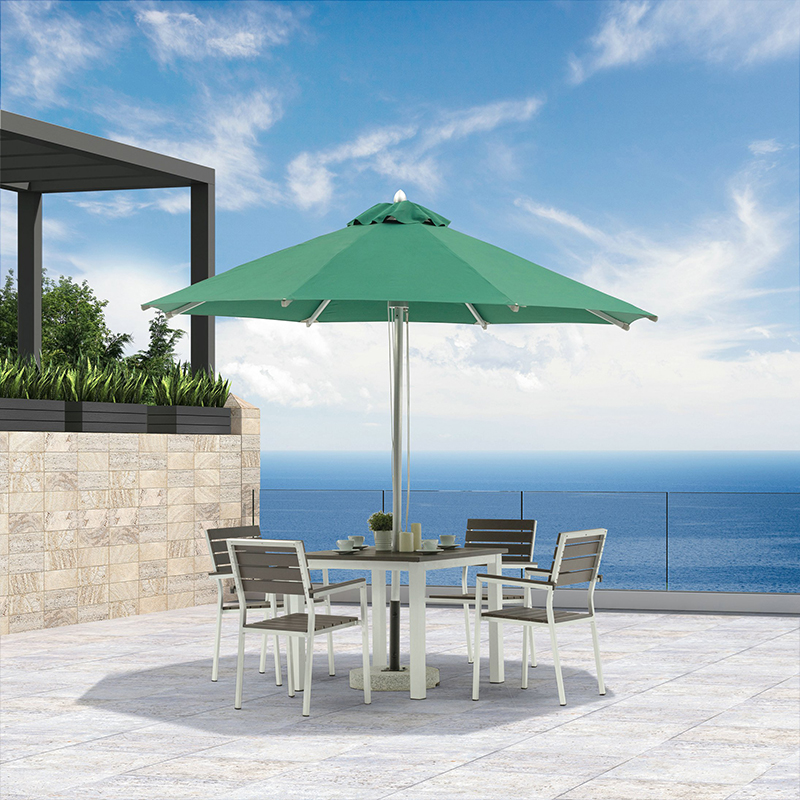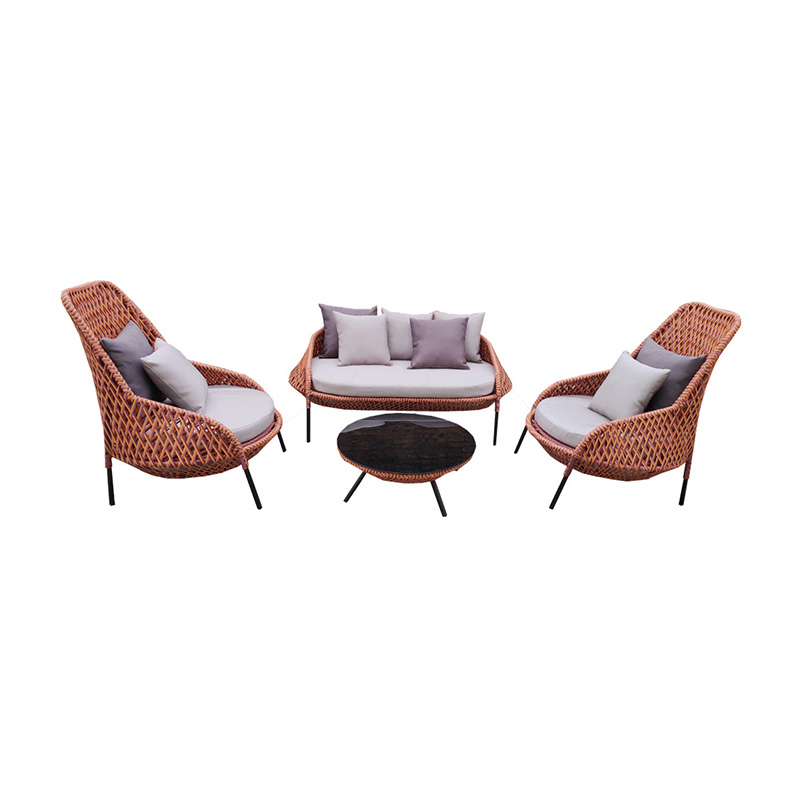Next to the grounds of what may have been the capital of the Shang dynasty from over 3,600 years ago stands a sleek yet inviting building. A step inside reveals a careful curation of round tables, rattan chairs, bamboo shades and calligraphic artwork that recall bygone times.
This is not a traditional tea house, but a coffee shop — in “new Chinese” style. Chengqiangli (城墙里) has become a hot check-in spot on local social media platforms thanks to its aesthetics referencing traditional Chinese culture. Located in Zhengzhou province near the Shangcheng Relics site, the store is best known for serving drinks in a gaiwan (盖碗), a lidded tea-brewing vessel that dates back to the Ming dynasty. China Sunshade Parasol Companies

In 2022, online searches for “Chinese-style coffee” (中式咖啡) surged 4,713 percent year on year, according to a report by Yelp-like app Dianping. In the last few years, more cafés across the country have created a distinctly Chinese atmosphere by incorporating traditional architecture, such as a courtyard, decorating their interiors with antique furniture, and serving drinks in gaiwans.
“In China's first-tier cities, Chinese cafés share similar application scenarios with their Western counterparts. They serve as popular spots for dates, chats, studying, business meetings, and more, catering to a diverse consumer base,” says Hazel Diliziya, a cultural and marketing consultant from Cherry Blossoms Intercultural Branding.
“However, some newly established cafés, especially those favored by young people for their unique coffee offerings or trendy decor, have a distinct ‘tool-like’ appeal. These shops have become a means for young people to showcase their unique tastes and chosen lifestyles,” she adds.
The localization goes beyond store aesthetics to infuse Chinese elements into the taste and preparation methods of the coffee as well. Many local coffee shops have drawn residents and tourists alike by embracing the local characteristics of their region.
For example, a store in Changsha offers “stinky tofu coffee,” named after its fermented tofu delicacy. According to netizens, this is actually just coffee with a charcoal-colored milk cap, topped with a yogurt ice cream that resembles a tofu block.
Meanwhile, a shop in Hangzhou offers “lotus coffee,” which is decorated with lotus leaves and pink flowers to resemble the city’s West Lake. Last year, the search volume for Lotus Coffee (荷花咖啡) increased by 12,033 percent compared to 2021, according to Dianping.
Other coffee shops have gained internet notoriety for adding unexpected ingredients, such as beef balls, garlic, preserved egg and pickled cabbage.
Because these specific product launches rely heavily on novelty, the buzz is often artificial and temporary. However, Guochao — or the integration of traditional Chinese elements in contemporary life — is no passing phase or gimmick.
Since the pandemic, domestic brands like Li-Ning and Anta have reported surging sales, while “new Chinese” fashion styles and hobbies like stove-boiled tea that pay homage to the past have emerged. Part of Guochao’s lasting relevance has to do with Chinese youth’s craving for something distinct in a globalized world where Western culture is prevalent, says Diliziya.
“The emergence of the Guochao trend offers an ideal avenue to cater to this pursuit, as it deviates from the omnipresent Western influences and presents a refreshing and distinctive alternative,” the Cherry Blossoms consultant tells Jing Daily. “Guochao becomes a potent symbol through which [China’s young generation] can articulate their uniqueness, fostering a profound sense of belonging within their heritage.”
At the same time, Guochao is driven by real aesthetic and taste preferences as well as nostalgia, says Jacob Cooke, the co-founder and CEO of WPIC Marketing + Technologies.
“If we look at a typical Gen Z consumer, they probably didn’t grow up with coffee in their household and their parents probably aren’t habitual coffee drinkers. In adulthood, they might have adopted a taste preference for coffee as it is enjoyed in Western markets, but they might be very open to blending coffee with flavors they are more familiar with and grew up with. Combined with the nostalgia marketing associated with Guochao, that’s a smart tactic by brands,” Cooke explains.
The “Sinicization” of coffee culture also shows just how far the caffeinated drink has come in being accepted and popularized. Coffee didn’t really land on Chinese consumers’ radar until 1999, when Starbucks opened its first doors in the country.
Since then, it has slowly become integrated into people’s daily routine. According to CBNData’s 2023 China Urban Coffee Development report, 87 percent of coffee drinkers in the country drink coffee at least once a week while 25 percent drink at least a cup a day (for comparison, 79 percent of Americans coffee drinkers chug at least two cups a day, per Statista).
Among the top three reasons Chinese consumers drink coffee are to relax, to refresh their minds, and because they like the flavor.
“In Chinese cities, the penetration rate of coffee-serving establishments is so high that it’s now an integral part of the food and beverage scene,” adds Cooke. “The Starbucks on the corner is no longer a foreign novelty because there are simply so many, and there’s now countless local and foreign competitors. That’s a reflection of the coffee consumption rate increasing, especially among young urban professionals.”
Another reflection of China’s growing reliance on coffee? The trending phrase “Morning C , Evening A” (早C晚A). The term usually refers to taking daily doses of vitamins C and A for skincare, but it has also come to represent the self-medicated routine of overworked office workers: coffee in the mornings, alcohol in the evenings.
By 2025, China’s coffee market is expected to reach 51 billion (369.3 billion RMB), up 21.5 percent from 27.8 billion (200.7 billion RMB) in 2022, states the aforementioned CBNData report. Young and high-income women (those who make over 10,000 RMB a month) constitute the main consumer group for coffee.
Given this, it’s no surprise that luxury brands are starting to partner with local coffee shops to generate traction. Louis Vuitton, for example, teamed up with Manner, Metal Heads, and Plusone last month to launch pop-up bookstores in Shanghai. Other names like Helena Rubenstein and Tesla have also joined forces with Manner to launch creative campaigns that satisfy the eyes and taste buds.
As China’s coffee industry matures, these local players offer a compelling narrative to Western brands as collaborators.

China Reticulated Foam “These homegrown coffees boast affordability and a captivating array of localized and diverse flavors, swiftly winning over the hearts of the younger generation,” says Diliziya. “Moreover, this flourishing rise of domestic coffee brands has instilled a profound sense of pride among Chinese consumers, affirming the industry's remarkable growth and promising future.”